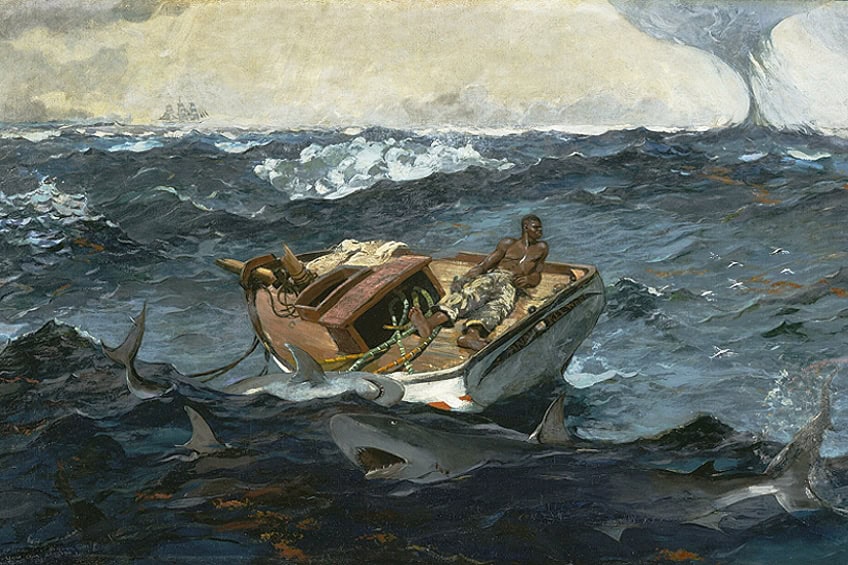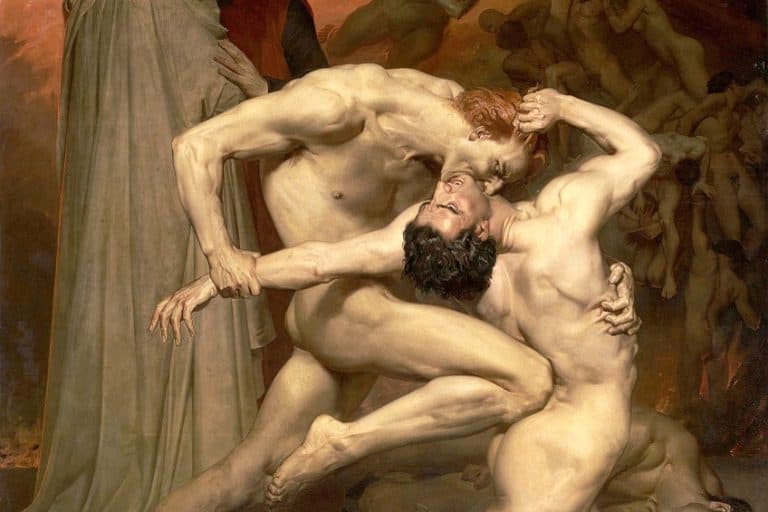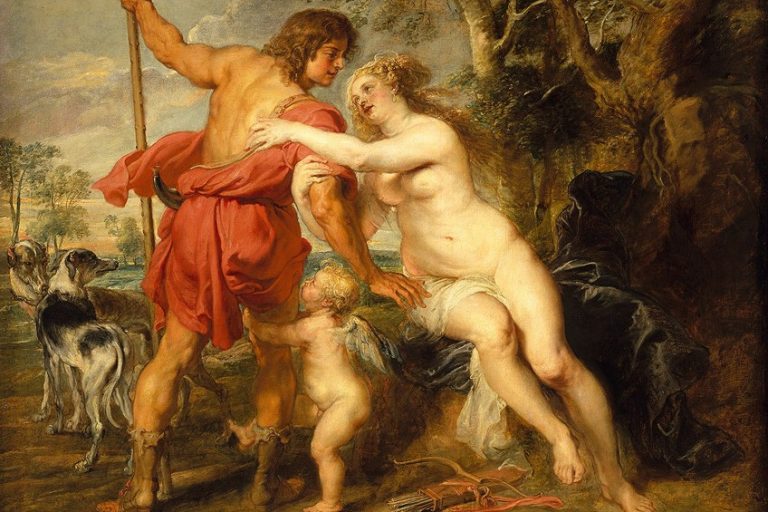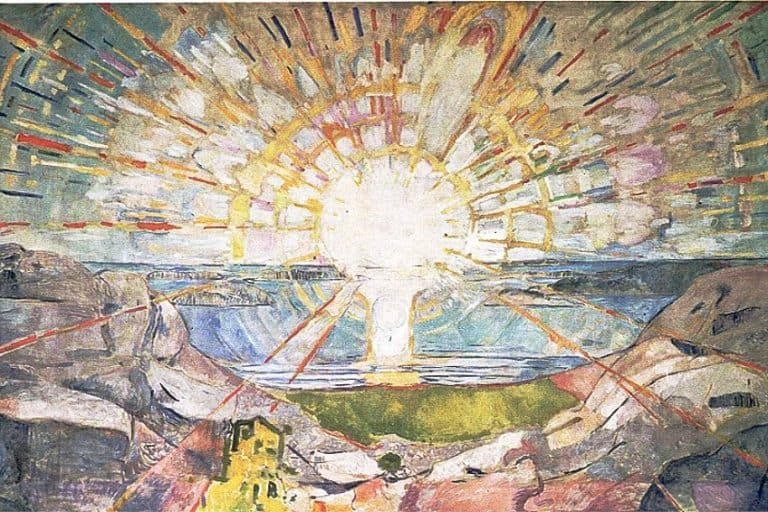“The Gulf Stream” by Winslow Homer – The Perils of the Sea
The Gulf Stream, painted by Winslow Homer in 1899, stands as one of the most powerful and evocative pieces in American art history. This dramatic seascape depicts a solitary man adrift on a small, damaged boat, surrounded by ominous waves and predatory sharks. The painting’s vivid realism and intense emotional impact reflect Homer’s masterful ability to convey human vulnerability against the vast, indifferent forces of nature. As a seminal work in Homer’s oeuvre, The Gulf Stream not only highlights his technical prowess but also encapsulates broader themes of isolation, peril, and the human struggle for survival, resonating deeply with viewers since its creation.
Key Takeaways
- The Gulf Stream is a profound work by American artist Winslow Homer that portrays a man’s confrontation with the formidable forces of the sea.
- The painting explores complex themes including survival, resilience, and human vulnerability against the backdrop of nature’s might.
- Homer’s work has left a lasting impact on the artistic community, inviting interpretations that contribute to its enduring legacy and influence.
Historical and Cultural Context of The Gulf Stream
| Artist | Winslow Homer (1836 – 1910) |
| Date Created | 1899 (reworked in 1906) |
| Medium | Oil on canvas |
| Genre | Marine painting, Realism |
| Period/Movement | American Realism and Naturalism |
| Dimensions (cm) | 71.4 x 124.8 |
| Series/Versions | Standalone work |
| Where Is It Housed? | Metropolitan Museum of Art, New York, United States |
| What It Is Worth | Estimated at tens of millions USD, though the exact value can vary based on market conditions and provenance. |
The Gulf Stream is a striking oil painting by Winslow Homer, an esteemed figure in American art known for his marine subjects and profound depiction of nature’s power. Created in 1899 and later reworked by 1906, the piece depicts a lone African American man adrift in a dismasted, rudderless boat on the tumultuous seas of the Gulf Stream. The painting is imbued with elements of struggle, danger, and human resilience, as the central figure is surrounded by menacing sharks and a distant waterspout, capturing a moment where man is confronted by the overwhelming forces of nature.
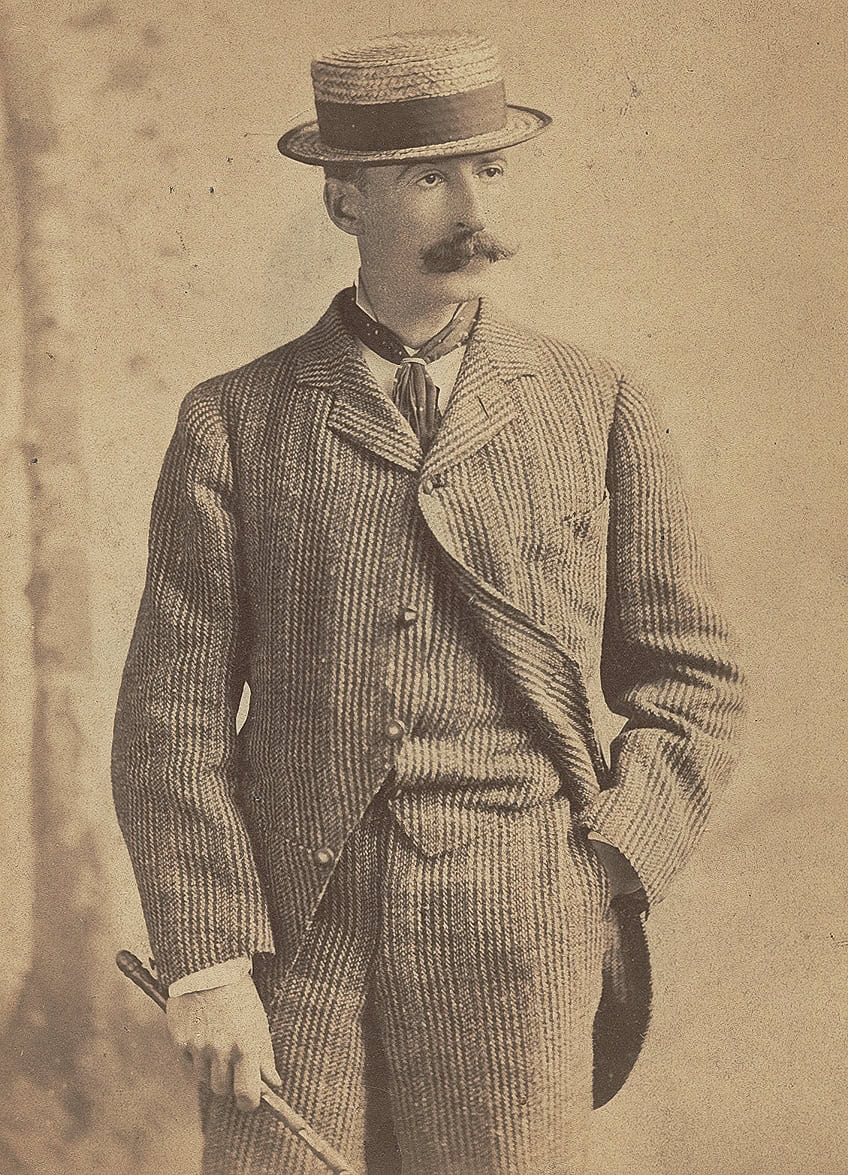
Through careful composition and vivid imagery, Homer conveys a narrative that is open to interpretation, ranging from literal survival to symbolic representations of hope and despair. The Gulf Stream stands out as a definitive work in Homer’s career and is celebrated for its complex thematic exploration and rich cultural significance. It embodies a period where art began to address deeper emotional and existential undercurrents, reflecting the spirit of its age, while also encapsulating universal themes that transcend time.
Influence of Nineteenth-Century Events
The Gulf Stream portrays a solitary figure at sea, navigating a tumultuous ocean rife with danger. During the nineteenth century, maritime travel was fraught with risks. The painting captures the essence of the struggles against natural forces, particularly reflective of the frequent and devastating hurricanes that plagued the Caribbean and Florida coasts.
- Florida: Frequently experienced the impacts of hurricanes, which reshaped the coastline and affected marine traffic.
- Caribbean: A region known for its treacherous seas and storms, which were common threats to sailors during the period.
Homer’s work draws on the people’s resilience and ongoing confrontation with nature’s unpredictability.
Post-Civil War and Slavery References
Post-Civil War America was a time of tumultuous change and reconstruction, especially in relation to the experience of African Americans. The central figure in Homer’s work is a Black man, which can be interpreted as a deliberate reference to the legacy of slavery.
- Slavery: The aftermath of slavery was still felt during the period when the painting was created, making the theme highly relevant.
- Cuba: An island with its own history of slavery, not far from where The Gulf Stream takes place, which was a pivotal setting for debates on freedom and human rights of the era.

Exhibited at places like the Carnegie Institute, the painting also engaged with cultural discussions of the time about race, survival, and human agency. Homer’s inclusion of such a figure invites reflections on the historical context of emancipation and the ongoing struggles for equality in the aftermath.
The Gulf Stream: Thematic Exploration and Artistic Significance
Winslow Homer’s oil painting, The Gulf Stream, serves as a profound exploration of human vulnerability and the awe-inspiring power of nature. It encapsulates the thematic dichotomy of survival against seemingly insurmountable odds.
Symbolism of Vulnerability and Survival
The central figure in The Gulf Stream is a Black man, situated alone on a dismasted, rudderless fishing boat, encapsulating a poignant symbol of vulnerability. The surrounding sharks symbolize imminent danger and the persistent threat to existence. However, this man’s composed demeanor amidst the chaos suggests an indomitable human spirit and a will to survive.
The lack of visible distress in the man’s posture shifts the narrative from one of sheer desperation to resilient survival.
Interpretations of Nature and Human Endurance
The tumultuous sea and circling sharks underscore the unpredictable and often perilous forces of nature. The Gulf Stream can be seen as a fascination with the theme of man against nature. The fearsome weather, paired with the menacing wildlife, such as the sharks indicative of shark fishing regions, underscore Homer’s commentary on nature’s supremacy.
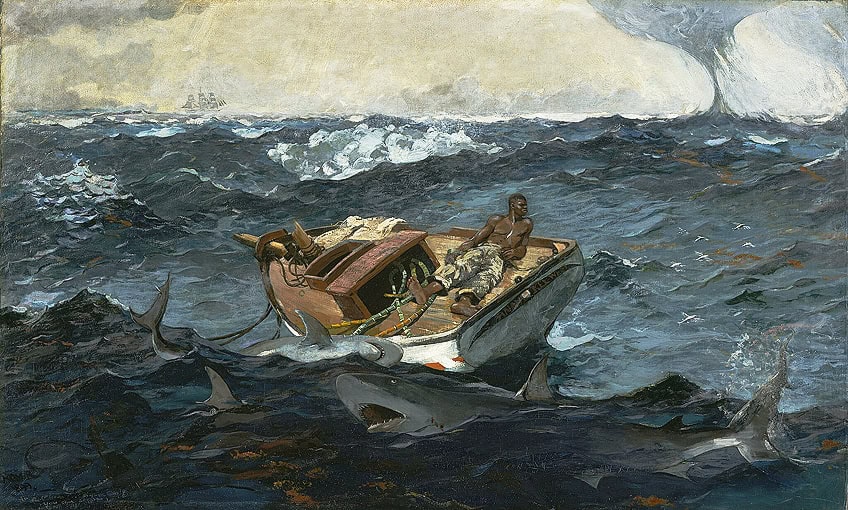
However, a distant hope appears on the horizon, implying that human endurance, as exemplified by the sailor’s stoicism, can endure the trials imposed by the natural world. Thus, the painting speaks to the complex relationship between nature’s dual role as a provider and destroyer. In The Gulf Stream, Homer contributes enduringly to American Art, combining narrative depth with technical mastery in oil painting, ultimately portraying the universal themes of vulnerability and fortitude with an assured sense of reality.
The Gulf Stream‘s Influence and Legacy
The Gulf Stream by Winslow Homer, a significant work in American art, continues to influence generations and maintains a presence in prestigious art institutions, such as the Metropolitan Museum of Art.
Impact on American Art and Future Generations
Winslow Homer’s seminal work, The Gulf Stream, is widely recognized for its profound impact on the evolution of American art. Evoking themes of struggle and endurance, the painting’s stark depiction of a lone man amidst a menacing sea helped cement Homer’s legacy as a master of naturalism and narrative.
The Gulf Stream resonates deeply with American audiences, embodying the spirit of the human condition confronted with nature’s overpowering force.
Art History scholars often refer to this iconic piece when exploring American realism and the turn of the century’s artistic narrative. The painting’s influence extends beyond aesthetics, prompting discourse on race, survival, and humanity’s fragility. It has served as a touchstone for subsequent generations of artists, inspiring them to explore similar themes while echoing Homer’s visceral style.
Preservation and Display
The Metropolitan Museum of Art proudly preserves The Gulf Stream within its Catharine Lorillard Wolfe Collection, one of the museum’s principal galleries dedicated to American paintings. The stewardship of the painting at such a renowned institution ensures that it remains accessible to the public and scholars alike, facilitating ongoing study and appreciation. Its display in Gallery 767 enables visitors to engage directly with the artwork, to study its composition, and to partake in its historical significance first-hand. The commitment of institutions like the Metropolitan Museum of Art and the National Gallery to preserving such quintessential works is vital for the sustenance of cultural heritage and provides an unbroken link between the past and future art enthusiasts.

Winslow Homer’s The Gulf Stream remains a poignant and enduring masterpiece that captures the tumultuous interplay between humanity and nature. Through its stark realism and emotional depth, the painting continues to evoke profound reflections on themes of isolation, resilience, and the human spirit’s perseverance in the face of overwhelming odds. Homer’s meticulous attention to detail and ability to infuse his work with narrative complexity ensure that The Gulf Stream not only stands as a testament to his artistic genius but also as a timeless exploration of the existential struggles that define the human condition. Its place in art history is secured not only by its technical brilliance but also by its ability to resonate with audiences across generations, making it a quintessential piece in the study of American art.
Frequently Asked Questions
What Does The Gulf Stream Painting Symbolize?
The Gulf Stream is rich in symbolism, depicting a Black man alone on a dismasted boat surrounded by sharks and rough seas. The scene may represent themes of struggle, survival, and human resilience in the face of nature’s indifference.
What Aspects Distinguish Winslow Homer’s Painting Style?
Winslow Homer is noted for his realism and use of vivid color. In The Gulf Stream, his style is evident through the meticulous depiction of the sea’s power and the precise rendering of human vulnerability against the vastness of nature.
How Does The Gulf Stream Reflect the Themes Common in Winslow Homer’s Marine Paintings?
The Gulf Stream embodies themes commonly found in Homer’s marine paintings, including the relentless power of the sea and man’s smallness in comparison. This painting, like many of his others, explores the intersection of human narratives and the natural world.
Isabella studied at the University of Cape Town in South Africa and graduated with a Bachelor of Arts majoring in English Literature & Language and Psychology. Throughout her undergraduate years, she took Art History as an additional subject and absolutely loved it. Building on from her art history knowledge that began in high school, art has always been a particular area of fascination for her. From learning about artworks previously unknown to her, or sharpening her existing understanding of specific works, the ability to continue learning within this interesting sphere excites her greatly.
Her focal points of interest in art history encompass profiling specific artists and art movements, as it is these areas where she is able to really dig deep into the rich narrative of the art world. Additionally, she particularly enjoys exploring the different artistic styles of the 20th century, as well as the important impact that female artists have had on the development of art history.
Learn more about Isabella Meyer and the Art in Context Team.
Cite this Article
Isabella, Meyer, ““The Gulf Stream” by Winslow Homer – The Perils of the Sea.” Art in Context. June 4, 2024. URL: https://artincontext.org/the-gulf-stream-by-winslow-homer/
Meyer, I. (2024, 4 June). “The Gulf Stream” by Winslow Homer – The Perils of the Sea. Art in Context. https://artincontext.org/the-gulf-stream-by-winslow-homer/
Meyer, Isabella. ““The Gulf Stream” by Winslow Homer – The Perils of the Sea.” Art in Context, June 4, 2024. https://artincontext.org/the-gulf-stream-by-winslow-homer/.


